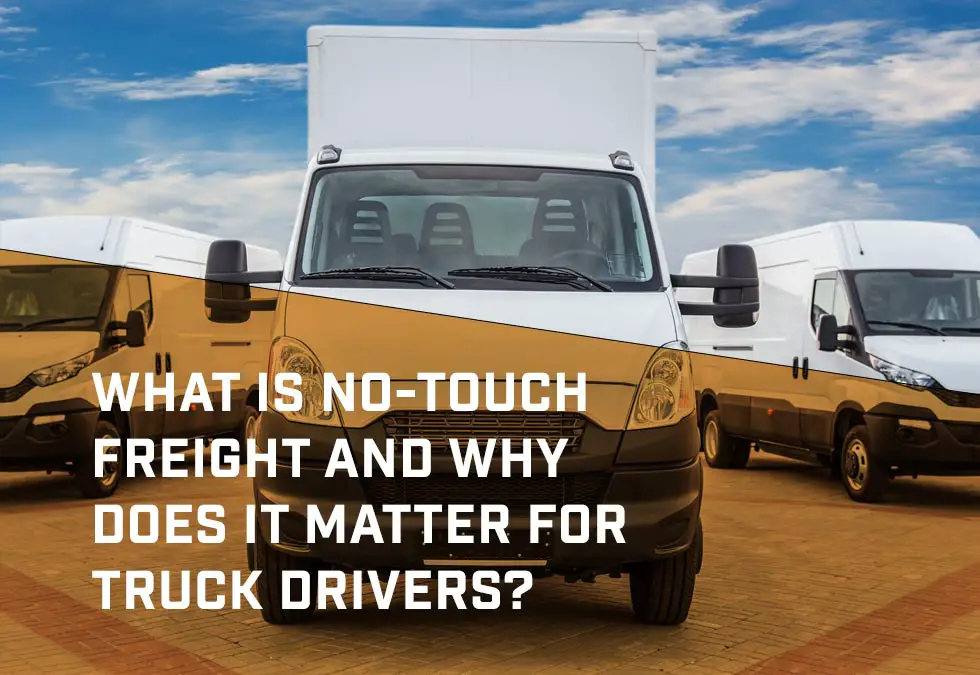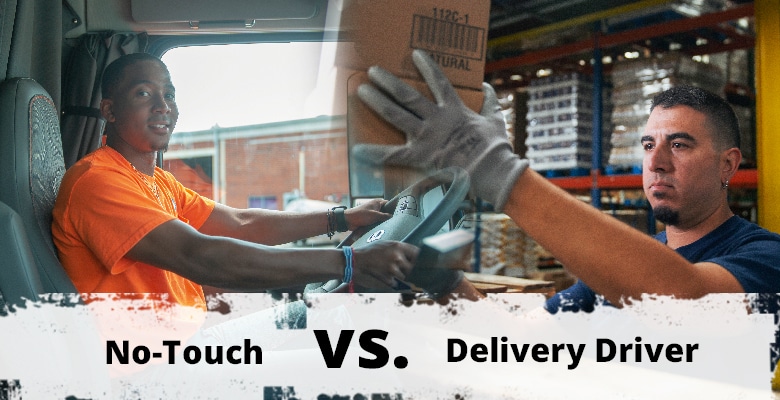
No touch freight means truck drivers do not load or unload the cargo themselves. It is when the shipper’s or consignee’s employees handle the loading or unloading.
In the transportation industry, the concept of no touch freight holds significant importance for truck drivers. This term refers to freight that does not require the driver to load or unload it. This can be advantageous for drivers as it reduces physical labor and time spent handling cargo, allowing them to focus on driving efficiently and safely.
By understanding what no touch freight entails, both drivers and logistics companies can optimize operations and enhance productivity. Let’s delve deeper into the implications and benefits of no touch freight in the trucking industry.
Navigate As You Want: [show]
What Is No Touch Freight?
No Touch Freight refers to cargo that truck drivers are not responsible for loading or unloading. This means that the shipper’s or receiver’s employees handle the freight, allowing drivers to focus solely on driving. On the other hand, Touch Freight requires drivers to handle the cargo themselves, often involving the loading and unloading process. The key difference lies in the level of physical involvement of the drivers with the freight. No Touch Freight offers drivers the benefit of avoiding physical labor associated with freight handling, while Touch Freight entails such responsibilities. This distinction is crucial for drivers seeking positions that align with their preferred work style and physical capabilities.

Credit: drivefordti.com
Advantages Of No Touch Freight
No touch freight refers to cargo that truck drivers do not have to load or unload themselves. This means that the responsibility of loading or unloading the trailer/container lies with the shipper’s or consignee’s employees, allowing the driver to rest in the truck cab.
It is a convenient and time-saving option for drivers.
| Advantages of No Touch Freight |
| Reduced Physical Labor for Drivers |
| No-touch freight reduces physical strain on drivers as they are not required to load or unload cargo themselves. |
| Quicker Turnaround Time |
| Without the need for manual handling, no-touch freight operations typically have faster turnaround times. |
| Less Risk of Damage to Cargo |
| Since drivers are not directly involved in the loading/unloading process, there is a lower risk of cargo damage. |
Disadvantages Of No Touch Freight
| Disadvantages of No Touch Freight |
| Reliance on Other Workers for Loading and Unloading |
Drivers need to depend on others for the loading and unloading process, which can cause delays.
Having to rely on external workers increases the chances of inefficiency in the freight handling.
No-touch freight restricts drivers from experiencing a diverse range of tasks, leading to monotony.
Common Questions About No Touch Freight
No-touch freight refers to the type of freight that truck drivers are not responsible for loading or unloading. In contrast to touch freight, where drivers handle cargo themselves, dealing with the loading process or assisting facility workers, no-touch freight allows drivers to rest in the truck cab while warehouse employees load or unload the trailer/container. For truck drivers, it means they don’t have to handle the physical labor of loading or unloading, which can be an attractive feature of a driving job. When it comes to local truck drivers, their responsibility for loading and unloading may vary. For instance, OTR drivers may have a team that handles loading or unloading, while local drivers often manage these tasks on their own, leading to more manual labor. Overall, understanding the distinction between no-touch and touch freight can help truck drivers make informed decisions about their job preferences and commitments.
Importance Of No Touch Freight In The Trucking Industry
No touch freight plays a crucial role in improving efficiency in trucking operations. By eliminating the need for drivers to handle loading and unloading of cargo, it allows them to focus solely on driving. This not only saves time but also reduces physical strain on drivers, ultimately leading to fewer injuries and better overall well-being. Additionally, by entrusting the loading and unloading process to trained warehouse workers or employees at the shipper’s or consignee’s location, the chances of damage to the freight are minimized, resulting in enhanced customer satisfaction. Overall, no touch freight streamlines operations and ensures smoother delivery processes, making it an indispensable element in the trucking industry.

Credit: schneiderjobs.com

Credit: www.warriorlogistics.com
Frequently Asked Questions Of What Does No Touch Freight Mean
What Is A Touch Freight?
Touch freight refers to jobs where drivers handle cargo, unloading it at the destination. This may involve managing the loading process or helping facility workers. Unlike no-touch freight, touch freight requires direct handling of the cargo by the driver at the destination.
Are Truck Drivers Supposed To Unload Their Trucks?
Truck drivers are usually responsible for unloading their trucks at the destination. They may handle the unloading process themselves or assist facility workers.
Do Local Truck Drivers Load Their Own Trucks?
Local truck drivers handle their own loading and unloading, requiring more manual labor compared to other drivers.
What Does Drop And Hook Mean?
Drop and hook refers to the process of delivering a full trailer and then connecting to a pre-loaded one.
Conclusion
Understanding no-touch freight is essential for truck drivers in the logistics industry. It signifies that drivers are not responsible for loading or unloading the freight themselves, allowing for more efficient and time-effective transportation. This blog post has shed light on the meaning and benefits of no-touch freight, providing valuable insights for drivers and shippers alike.




